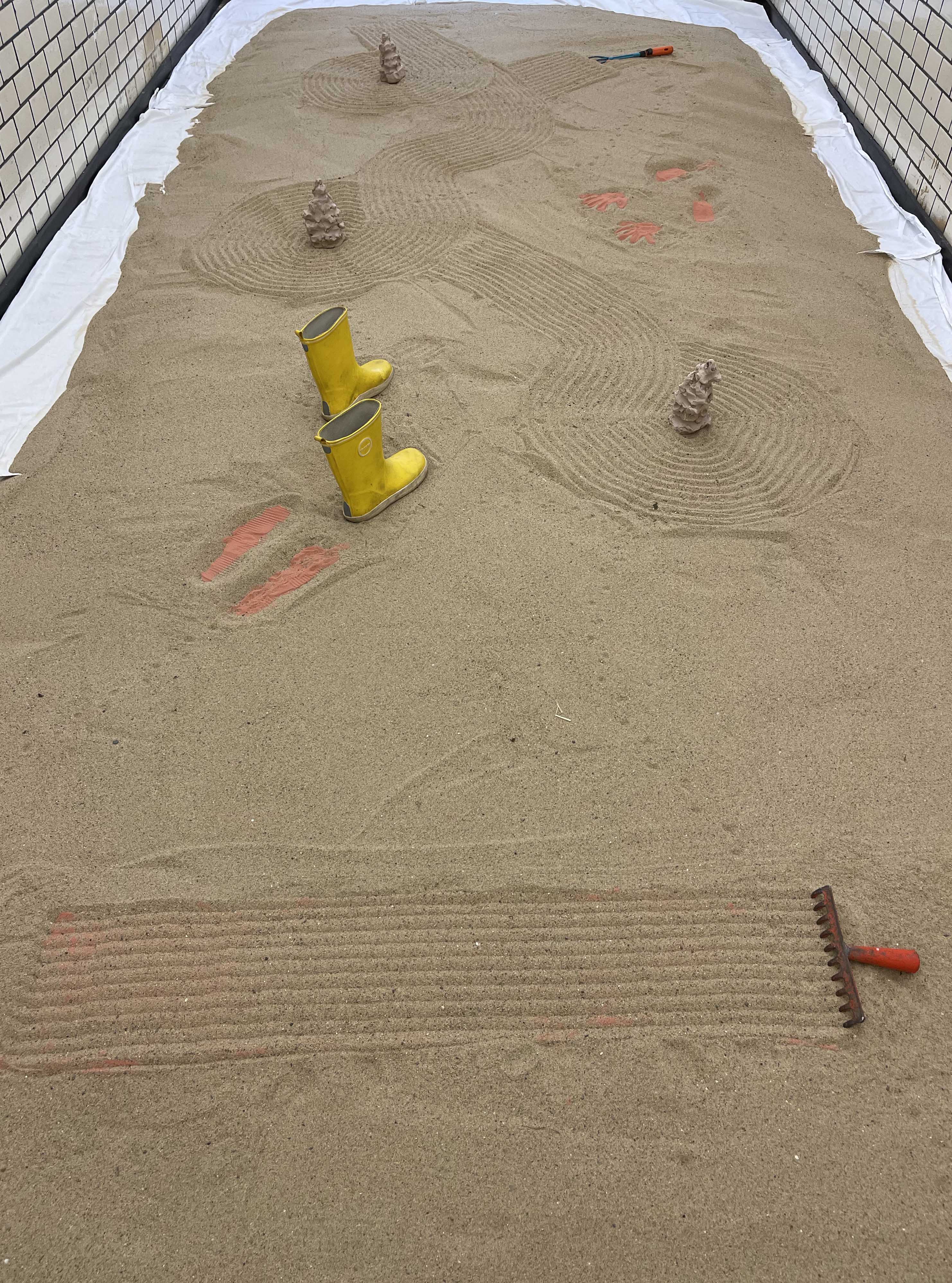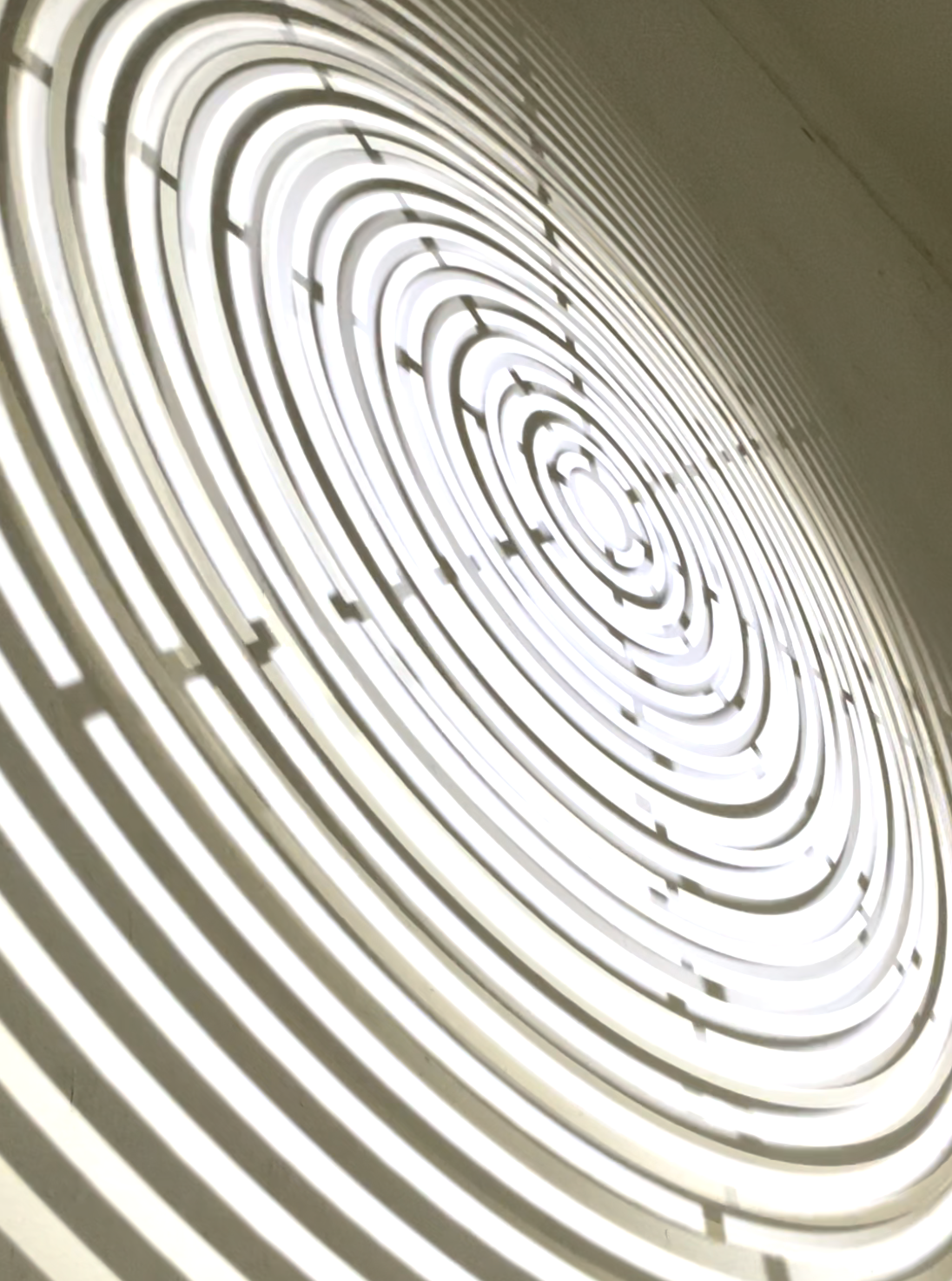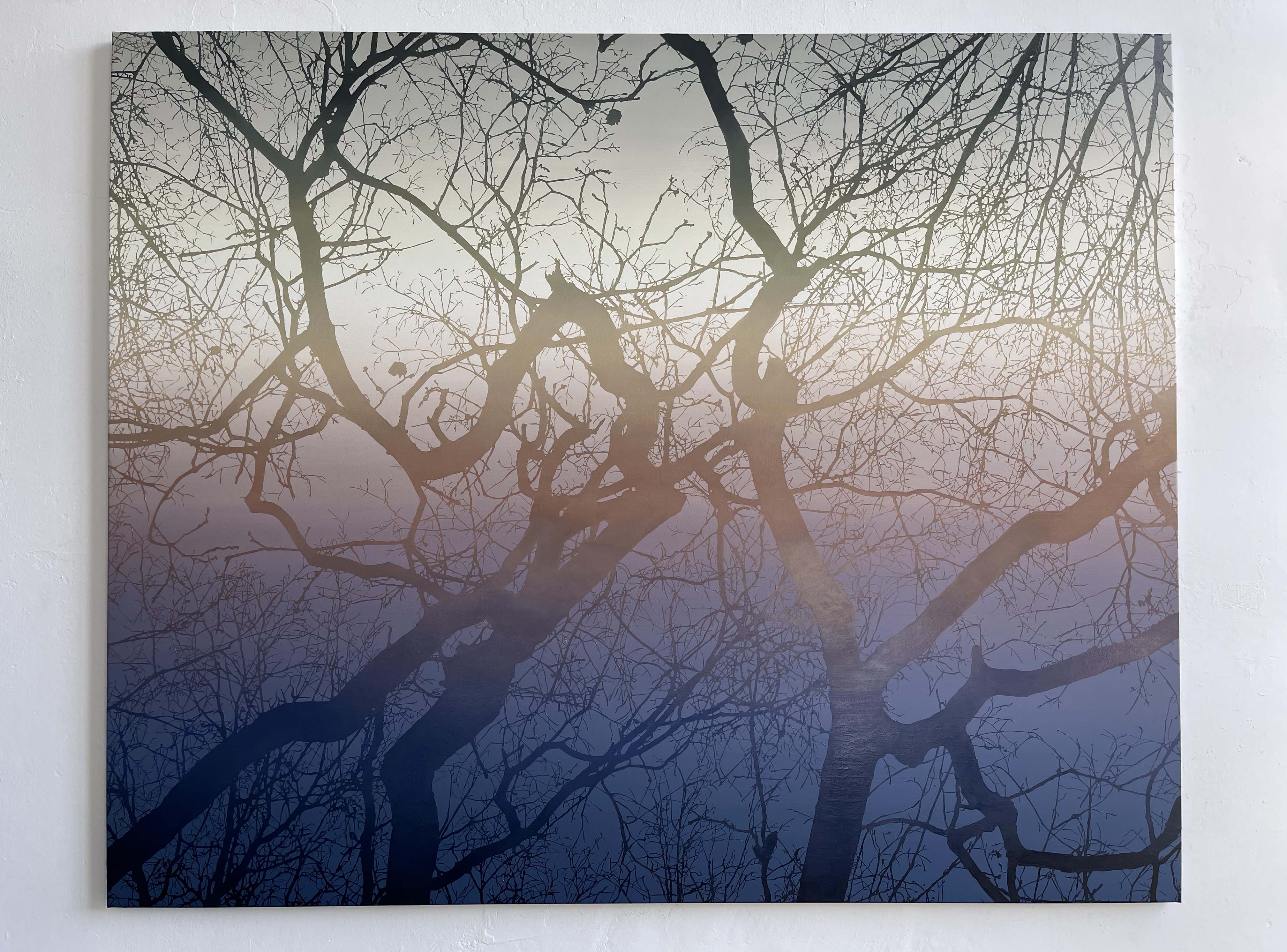Mo|nu|mentum at Studio Omstand
21/02/2021 - Written by Robin SpeijerOn the 20th of February we visited Studio Omstand in Arnhem to view Monumentum, an exhibition by one of the groups of Kunstpodium T’s Apprentice Master. At this moment it’s unfortunately not open to the general public because of the covid-19 measures. We wanted to take this opportunity we got to describe in text and image what we saw and heard, to create a digital way to visit. However, the group now made it possible themselves! You can visit the online version of the exhibition here.
The artists that are exhibiting are the group’s master, Roland Schimmel, and the four apprentices: Britt van den Boogaard, Maud Faassen, Christy Westhovens en Tycho van Zomeren. These five artists are connected strongly in the subtlety within their work, and gradual transitions. This is in visuals, sounds and movement.
The exhibition starts outside at the glass pavilion with a work by Christy Westhovens, Inertia. Right in the middle of it is a large metal rod with a lightbulb on its end, which is slowly lifted to one side by a mechanical motor. Motion detectors await the moment something or someone passes by, which then causes the rod to be dropped. The energy this generates causes the lightbulb to temporarily come on. Like a pendulum the rod swings back and forth for a few moments, steadily returning back to stillness. After a short pause, this routine starts again. This movement trigger in the work made it irresistible for us not to make it drop by walking around it ourselves. Christy explained the work is site specific, designed for the pavilion and its location. The building where Studio Omstand is located used to be owned by an electricity company, which comes back in the architecture and rooms, but also in the name of the square the pavilion stands (the Transformatorplein).
The artists that are exhibiting are the group’s master, Roland Schimmel, and the four apprentices: Britt van den Boogaard, Maud Faassen, Christy Westhovens en Tycho van Zomeren. These five artists are connected strongly in the subtlety within their work, and gradual transitions. This is in visuals, sounds and movement.
The exhibition starts outside at the glass pavilion with a work by Christy Westhovens, Inertia. Right in the middle of it is a large metal rod with a lightbulb on its end, which is slowly lifted to one side by a mechanical motor. Motion detectors await the moment something or someone passes by, which then causes the rod to be dropped. The energy this generates causes the lightbulb to temporarily come on. Like a pendulum the rod swings back and forth for a few moments, steadily returning back to stillness. After a short pause, this routine starts again. This movement trigger in the work made it irresistible for us not to make it drop by walking around it ourselves. Christy explained the work is site specific, designed for the pavilion and its location. The building where Studio Omstand is located used to be owned by an electricity company, which comes back in the architecture and rooms, but also in the name of the square the pavilion stands (the Transformatorplein).

‘Inertia’ by Christy mid-swing
Then we entered the ‘accuruimte’ (battery room). This room held the work of Maud Faassen. Unfortunately, they weren’t here when we came by, but it almost seemed like we had just missed them. The room had been filled with beach sand. In the sand three clay mounds were distributed, all encircled by the traces made by a large gardening tool. A pair of yellow rainboots stood in the middle with two shoeprints left behind it. Handprints were also visible. Both the hand and shoeprints had been filled in with red desert sand. Two gardening tools lay at the front and end. It was as if a performance had just been done here, and these were the traces left of it. On one of the walls was an accompanying text, that ‘echoed’ away gradually.
We staan en we laten
als water
in water
in water
n water
water
ater
ter
er
r
als water
in water
in water
n water
water
ater
ter
er
r

After that, the hall of connected (former) machinerooms was left. In the first was the work by the groups master, Roland Schimmel. Two of the walls had been painted with a colorful mural. Despite the colorfulness, these colors were extremely subtle, like you had been looking at a light for too long and this was the remnant shape imprinted on your retina. One showed a spiral, the other an arch. The wall with the spiral shape had a black canvas hanging on it, too. The canvas also showed a subtle color gradient coming from a circle in the middle. This created the illusion of it being metal that had been exposed to heat. The other wall with the arch had three drawings on it. They showed similar subtle colors and shapes, more of which seemed to appear as you kept looking.


A view of both walls, showing the murals, drawings and painted canvas by Roland
Meanwhile, sounds were coming from the next room. “Like the underground passing by” Roland commented. Here we saw and heard Britt van den Boogaard’s work. It consisted of a metal framework that held three circular metal plates, spotlights that lit them up and a sound installation. Motors attached to the plates spinned, making the plates tremble and produce sounds of the metal clanging against itself. The metal plates had a mazelike pattern cut into them, which allowed them to vibrate in accordance with the motors spins. Contact microphones were attached to the plates. They picked up the sound, which was then submitted to a subwoofer in the corner that strengthened it. This sound slowly built up to a level where it was as if something was tunneling underneath the space. She had not measured it exactly, but Britt estimated the entire cycle of the sound building up and back down again took 6 minutes. As the lights illuminated the plates, a mesmerizing shadow appeared on the walls. Both the sounds and lights were rhythmic and comforting, bringing you in a sort of trance.

The shadows created by Britt’s installation
In the final room a series of paintings by Tycho van Zomeren was on display. Two walls held a single larger sized painting, and on a third wall were two smaller paintings. The silhouette of various kinds of trees stood out against the backdrop of a gradient. One of them bright yellow to orange. A second from light yellow and a mute red to a deep blue hue, and the last two from black to white. They were very skillfully painted, which conveyed both the lighting and silhouettes in a very realistic manner. When looking closely, you could see all the subtle paint marks that formed the illusion. At that small distance the shapes of the seeds and branches became more abstract, allowing you to see different things appear within the calming colors.

One of the four paintings by Tycho
We thoroughly enjoyed seeing this exhibtion, one of the first in quite a while for us. It was very nice to be able to talk to most of the artists as well, and gain further insight in why and how the works had been made. They make an excellent team, and we are very curious to see what new works will be made by them in the future! Each of their works really flourishes when viewed in real, letting you come close, hear the sounds, see new things the longer you look. We are aware the photos won’t do their works justice, but we do hope to provide those who can’t view them in person with more information.
We very much hope soon everyone is able to see this exhibition, and many others in the future as well. Preferably in real of course! We will eagerly await the next Apprentice Master exhibitions. Until then!
We very much hope soon everyone is able to see this exhibition, and many others in the future as well. Preferably in real of course! We will eagerly await the next Apprentice Master exhibitions. Until then!
